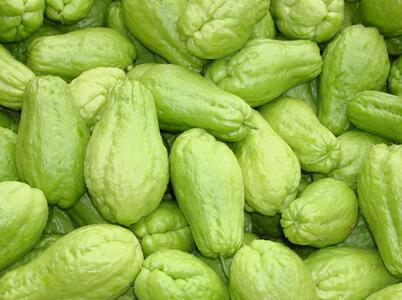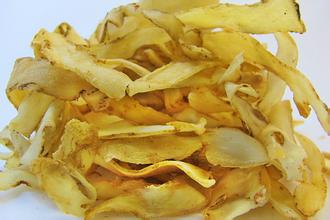Teach you how to grow water-cultivated bowl lotus step by step!
Because of its small size, it does not need too much container and space when planting, so it is often used as a variety of domestic plants. Bowl lotus big color, fragrance far overflow, has a strong adaptability, but also potted bottle, in modern landscape architecture, more and more favored by people, more widely used.
1. sowing
(1) Time:
All seasons can be used, but the water temperature should be above 16℃.
(2) Seeds:
Lotus seed shell hard, must be artificial break before soaking. The lotus seed has a small point at one end and a small dent at the other end. Wear the end with small pits on the rough concrete floor, taking care not to hurt the kernel inside, and not to shell. The purpose of peeling is to allow moisture to seep through this gap, causing the seed to swell with water.
(3) Soaking seeds:
Put the seeds that have been broken into shells in warm water of 20~40 ℃, change the water once every 1-2 days, and germinate after 3-5 days. Remove the seeds that foam and cannot germinate in time. Generally, under suitable external conditions, seeds that do not germinate for more than 7 days will not germinate again. Seeds that do not germinate tend to float to the surface, the embryo yellow, the cotyledons moldy, smelly.
(4) Sprouts transplantation:
Choose 45cm~75cm pore-free pottery pots or plastic flower pots, add half a pot of pastoral soil or river pond mud without chemical pollution, soak in water two weeks in advance, do not fertilize. Press the fine roots of small lotus seedlings into the mud, one plant per potted plant, and mix a small amount of decomposed cake fertilizer or bean bran and peanut bran as base fertilizer during transplanting. However, although the lotus is a fertile plant, it cannot be over-fertilized. Generally, when planting, a small amount of cake fertilizer and other base fertilizers can be mixed into the cultivated soil to meet the needs of the whole year. There is no need to apply topdressing to avoid excessive growth.
2. illumination
(1) The lotus likes sufficient sunshine. If the light is less than 4 hours a day, it cannot form flower buds.
(2) During the birth period, it should be placed on a sunny balcony or windowsill to make it receive full sunlight.
(3) When floating leaves are full of basin surface, floating leaves should be pressed into the bowl mud in time to avoid affecting ventilation and light transmission.
(4) The lotus plant is delicate, and it needs to be properly shaded around noon in summer and early autumn to avoid direct sunlight. If exposed to direct light, leaves and petals are easy to scorch.
3. pruning
When the leaves grow too much and too dense, some leaves can be removed appropriately to facilitate the respiration and ventilation of the plant. It also helps with flowers. When using the same container for multiple cultivation, when the leaves are found to compete for strong sunlight, they should be cultivated in pots in time.
Remind friends who love to plant lotus, in order to extend the flowering period, summer can use a plum seed size decomposed cake fertilizer as topdressing, put it into the mud in the center of the bowl can be. Do not apply around the bowl wall. Easy to cause root injury. Base fertilizer can not be applied too much, otherwise the light leaves luxuriant flowers sparse, heavy lotus root will be "burned". After a year of cultivation, the fertility of the lotus decreased, and the underground rhizomes were dense. It was advisable to turn the bowl and change the soil before germination in early spring every year.
Time: 2019-04-12 Click:
- Prev

When will bergamot melon blossom and bear fruit? What are the planting methods?
Bergamot melon is a new variety of vegetables, which is deeply loved by people because of its medicinal and nutritional value. For growers, if they want to grow bergamot melon well, they must know the method. And for foodie, the bergamot will also pay close attention to when it will blossom and bear fruit.
- Next

Efficacy and planting methods of Polygonatum odoratum
Polygonatum odoratum is a plant of Liliaceae. Long cylindrical, slightly flattened, rarely branched, surface yellowish white or yellowish brown, translucent, longitudinally wrinkled and slightly raised, with white dot-shaped fibrous root scars and disk-shaped stem scars. The quality is hard and brittle or slightly soft, easy to break, and the cross section is horny or granular. Faint breath, sweet taste.
Related
- Fuxing push coffee new agricultural production and marketing class: lack of small-scale processing plants
- Jujube rice field leisure farm deep ploughing Yilan for five years to create a space for organic food and play
- Nongyu Farm-A trial of organic papaya for brave women with advanced technology
- Four points for attention in the prevention and control of diseases and insect pests of edible fungi
- How to add nutrient solution to Edible Fungi
- Is there any good way to control edible fungus mites?
- Open Inoculation Technology of Edible Fungi
- Is there any clever way to use fertilizer for edible fungus in winter?
- What agents are used to kill the pathogens of edible fungi in the mushroom shed?
- Rapid drying of Edible Fungi

